YOU JUST GOT HERE AND YOU'RE ALREADY HORNY ON MAIN?!

YOU JUST GOT HERE AND YOU'RE ALREADY HORNY ON MAIN?!
More Posts from Thesassymarquess and Others
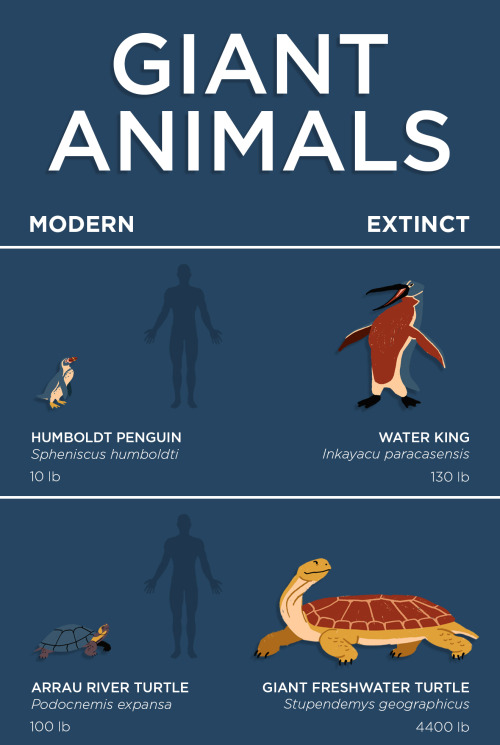
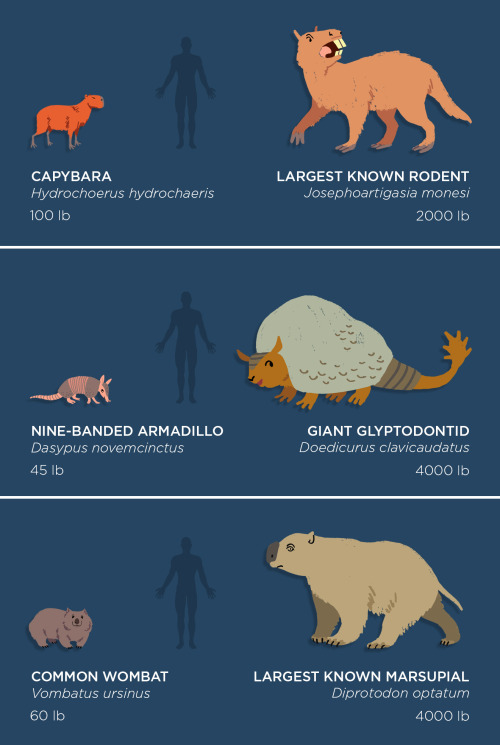
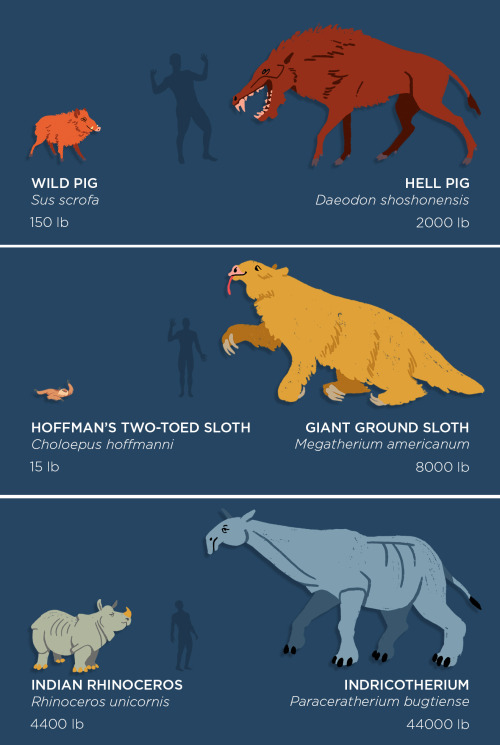
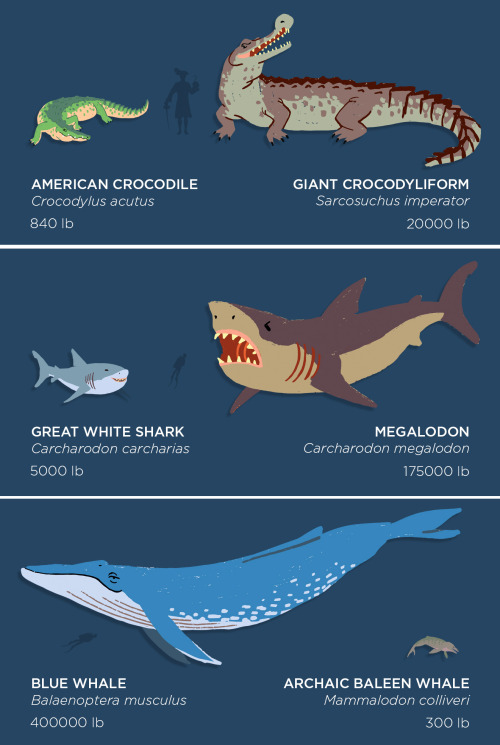
Did you find your missing baby?
Not yet. Kulet is still missing. I admit my schedule has been rough for playing DF as of recent, and my most recent time has been spent on a new fort (The Sea Adventure, a Sinister Ocean/coastal embark). Kulet is from my 4th Fort (Idk the name it was too long). Short summary of my forts though:
1st Fort, Bustmoment: -Tutorial embark. Went fine initially, set up large bedroom complex, good dining hall, and food/alcohol production. Decent traps for surface entrance. Lack of understanding of how Fortifications work lead to bad usage of them, and ultimately made the surface defenses scary to operate. Meanwhile I breached the first cavern layer and only the first, and got involved in a nasty war on Olm people, that kept dragging my dwarves into the lake. Eventually after losing a major military engagement, I dropped the save and made a new world. (I didn't know about Retirement at the time)
2nd Fort, Steelfortress: -The infamous war on birds started here. Embark was a neutral badlands with high savagery & a light aquifer. Aquifer posed no challenge and I was within a year having settled with all three caverns pierced, and a decent magma forge set up. Traps and such were more aggressively deployed, and there were more than a few battles (Internally referred to as the "Great Cavern Wars" against Ant-People) to carve out certain areas underground for farming. Ultimately what drove me to abandon this fort was a 9 month long battle against giant flying agitated wildlife. During that I built up a decently large and armored military, which while incapable of fending off the birds, was apparently itching for World Domination. (More on that later. Though also on another post of mine)
3rd Fort, "Lake of Something" (Name forgotten again): -Having felt a High Savagery was too much & Light aquifers too easy, I searched for a heavy aquifer and got a lake location I liked. After starting the first year, and trying to dig down, I almost immediately hit the heavy aquifer and got stuck for over a year trying to get things stable, and set up a method to pierce the aquifer before beginning to build the fort proper. Unlike the previous forts which had surface trading depots, I decided to move this one underground. Like other forts before and after, I then began to quickly dig towards the bottom, and set up small areas within each cavern to work in, or blocked them off after discovering them. Ultimately nothing particularly notable happened that sticks out in memory, but the fort was ultimately abandoned due to the Cave Adaptation fix update rolling around. Knowing most dwarves had likely developed it in this fort, I decided to take a break from Fortress mode, and play some Adventure mode.
(Which I decided to retire my second fort, as my save of it was in the worst condition of the three, and I originally wanted to retire the fort by "Succumbing to internal invaders" or similar but a standard retirement was an option and I viewed as more desirable)
4th Fort, Gooddesert the Fortress of Mines: -After playing around in Adventure Mode in the 2nd fort's world, I got an itch to start a new fort again, and was talking with my brother. We ultimately came to pick a fort in a Good and Neutral biome cross between "Desert?", badlands and Grasslands. Among world history, as it shares a previous fort, I decided to embark from that Civ again. Just to find out when the Liason came by, that 2 of my 3 dwarven neighbors were at war with me. Going through Legends mode further told me it was my Civ that seemed to have started the war, with all attacks coming from my prior fortress after I retired it. The whole time I was trying to rescue kidnapped children from Goblins in Adventure Mode, it turns out my fort was just attacking EVERYBODY. I played this one until around 1-2 weeks ago, when I began wanting to try messing with some mods for the first time.
4.5th fort, Some volcano Fort I think?: -I had a friend over and I was talking about DF, as you do, and he got curious about the game and wanted to see what it was like. So I booted the game up, showed world gen, we picked an embark, and then retired it to go to it in Adventure Mode. We then made an ideal character for him, and then foolishly rolled up a Worm Man with over 100 pet worms, and crashed the game. I haven't talked with said friend yet, and was gonna play in that world when talking with them.
5th Fort, The Sea Adventure: -That leaves us with our current fort. It's a sinister oceanic embark, and I brought a few adventurers there, including a Dwarf-me, a dwarf-version of my brother, and an anomalocaris (one of the mods) woman of one of my roommates (And their cat as a pet cat, who died to Goblins). Originally the plan was to grow Sliver Barbs & catch Precambrian Arthropods for an aquarium, but I don't know how to do the later half. The Roc attacks have been on this fort.
I’m willing to bet it won’t be long before there’s fanfic recreations of points 12 and 14.
Some trivia, Alex told on BigFest today:
The way the crew usual way of coming up with a story was to think of some normal situation and then add something magical and crazy. “Sock Opera” was used as the example: first they came up with an idea of Mabel trying to impress her puppet-obsessed crush with puppet show, and then they began brainstorming weird things that might happen. Some of the earlier ideas included Mabel getting super-knitting powers and making living sweaters, and puppets coming alive and attacking Mabel (Alex even made a drawing of that).
Soos never tasted alcohol in his life. As for Stan… Well, there’s the reason his nose is this color.
There will be more about Ford’s (mis)adventures beyond the portal in the Journal. Alex couldn’t talk about it much, but he gave a little teaser: Ford was thrown into a dimension, that was controlled by Bill (or his lackeys); there, his top priorities were: 1) learn to survive, 2) make a weapon capable of destroying Bill; on his journeys Ford made many friends and even more enemies and eventually became an interdimensional criminal. There will be a wanted poster for Ford in the upcoming Journal (and even more “Rick and Morty” references)
The journal will also have more info on Ford’s & McGucket’s adventures during their youth.
One of the chapters in the upcoming choose-your-own-adventure book will reveal something important about Bill’s dying message.
Giffany is still alive, she managed to import here code somewhere, before her disc was destroyed. Again, more on that in the Journal.
Originally, Soos was supposed to go by his full name (Jesus), but Disney advised against it, thinking that some people would accuse the show of blasphemy. But the decision to give Soos shortened name backfired, since many people thought his name was “Zeus”.
Originally Bill didn’t have a surname, but Disney again advised against it, since they were afraid that people behind the character “Mr. Bill” might sue them for copyright infringement. So Alex came up with the name “Bill Black”, he thought it sounded cool and mysterious, but it turned out there was a some real guy with that name, and Disney was afraid he might sue them. All the other names Alex came up with were rejected for the same reason. Eventually, one late night, Alex was coming up with ciphers for the upcoming episode and thought “What if I just name him Cipher?”. The rest is history.
There was a scene in “Sock Opera”, that had to be cut for time, where Bill claimed, he was behind many great minds of the history, like, for example, helping Isaac Newton discover gravity and helping Stanley Kubrick fake the moon landing.
Bill can never go back to the place he came from. Alex also hinted that there may be more about his origins in the Journal, although not much, since Bill is the kind of character that benefits from being mysterious.
Dipper’s real name is NOT Michael, Alex, Mabel or Bill.
There was supposed to be a sub-plot in the finale, where clones #3 & 4 would try to kidnap Dipper and go back home with Mabel instead of him, but it was cut due to being too confusing.
Alex is talking with Disney about making some Gravity Falls comics, although nothing is concrete yet.
One of the ideas for the sixth “Mabel’s Guide” short was “Mabel’s Guide to Death”, in which her pet caterpillar gets eaten by a bird, and she talks about coping with death. The idea was rejected for being too morbid. The replacement idea - “Mabel’s Guide to Smiles” - was deemed offensive by Disney, since Mabel was going to visit local prison and try to teach inmates to smile. Although Alex might upload the storyboards for this rejected short online some day.
As a college student in computer science, fuck generative AI. I’ve watched it suck the brains right out of peers, to the point they’re incapable of doing basic tasks. It’s mindnumbingly frustrating to be explaining something to them, just to get a “Oh let me just ask ChatGPT”. Like… if you didn’t get the explanation I JUST gave you, just tell me what part! I was teaching them how to set up a unity project for our SENIOR PROJECT, they said “I’m just going to ask ChatGPT,” and then did, in front of me. And then, ChatGPT gave them the wrong answer, and I had to correct them AND the AI and restate my original point. And this was for the install process for modules… I’d even linked the manual for it
Hey, you reblogged that AI post and I was surprised to see something so mean on your blog. "If you cant write unassisted, fuck you, youre a disgrace to the community." Is that really something you want on your blog?
Just in case this isn't a spam message:
Posting AI-generated content to a platform intended to be an archive for writers is not appropriate use of the platform. On a platform intended for human creation, it is rude and inappropriate to clog search results with AI-produced content which often plagiarizes the work of human authors.
Use of generative AI is also horrible for our environment, leading to massive waste of fossil fuel energy and water. We should not be doing damage to our planet for the sake of generating (robot-produced, often plagiarized) fiction, especially when the joy of fiction comes from the creation and emotion of real people.
Rather than giving a prompt to a generative AI, people should consider attempting to write their own work, or asking another writer from the fandom if they would be interested in writing it. Anyone who is capable of typing a prompt into ChatGPT is capable of writing a story. The first attempts may not be amazing, but that is true of any skill, and anyone can improve with time and practice - and while ChatGPT may give you big returns in your time, it doesn't give you practice, growth, or creativity, which is where the joy of writing should come from.
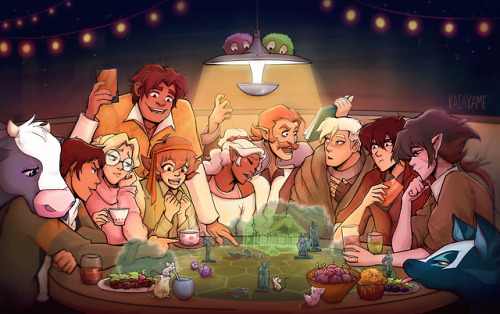
the idea that they didn’t make frequent pit stops at random dingy alien trucker bars to play late-night sessions of monsters & mana on their long road trip back to earth? ……………preposterous.
[On the first date]
Adrien: Do you like cats?
Marinette: I love them
Adrien, trying to impress her: [pushes her drink off the table]

Hey girl...maybe share some shit for the rest of us?
Chapter 1 of Dimension 52 over on Archive of Our Own. Also there’s chapters 2 and 3 over there too. This is to anyone who prefers AO3 to Tumblr.
I caught that “Soup Store” reference. I’m reblogging solely because of it

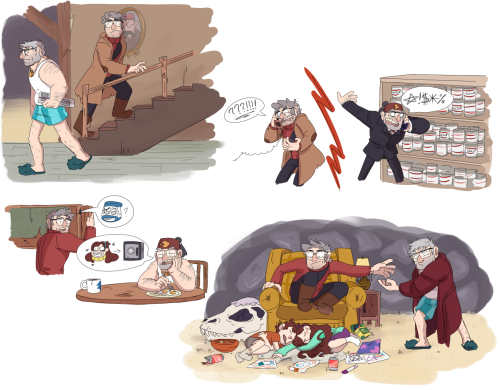
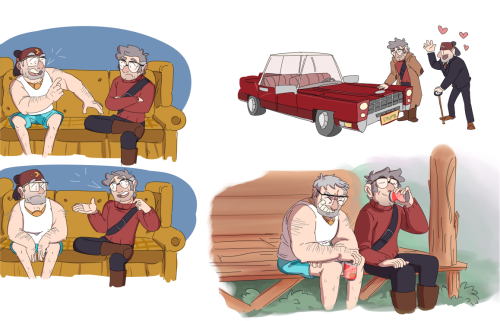
You kind of have to wonder, if 2B had been drawn out over a full season, just how long they could have sustained these two not speaking to each other
Responding to both the reblog above, and the tags from dwarvendiaries, I would like to note, I tried to *mostly* cover stuff for the first couple years that a less experienced player may be concerned with. I admit forgetting there's three different fabric types (technically 4, but dwarves never want metal cloth thankfully) was something that slipped my mind and is a good catch.
Yarn comes from animals, Cloth from plants & silk from spiders/monsters, and all three can be requested for moods and are NOT interchangeable with each other. As far as I can tell, this and value are the main differences between them use-wise. Production-wise which is easiest depends on what you have available. I personally find Silk usually the easiest to stockpile, but that is because I captured a Giant Cave Spider in one fort, and a Forgotten Beast in another... That is not necessarily an easy or safe idea, but if done offers a massive amount of silk for free. Likewise animals can be sheared for a large amount of wool fairly regularly. My textile industries personally tend to be capped by clothiers/dyers/dye rather than cloth usually.
As for moods, it is true that the type of workshop a dwarf uses can be semi-easily manipulated. My latest fort shows as much, where 4/6 artifacts made in the fort so far (summer of the 5th year) have all been metal. Part of it is luck (I've gotten lucky metalsmiths have gotten the pick so far), part of it is manipulation... (I've trained approximately 1/3rd of the fort by my estimate in some level of a metalsmithing skill. Mostly armorsmithing, metalsmith's were my second guild to form, forming about a month after farmers & a week before craftsdwarves)
Which I suppose brings up another topic, petitions for locations. *Generally they are always worth pursuing*. I can't think of a reason why you'd want to take the unhappiness hit for denying one, considering that a guild hall can: -Be restricted to only guild members (preventing training of undesired skills by new dwarfs) -Teaches dwarves skills without them needing to do labor -Are a nice and convenient source of happy thoughts
Meanwhile temples offer happy thoughts, and a new method of dwarves venting their issues & clearing their needs for prayer.
You should definitely consider setting up guilds for skills you value, especially a doctor's guild, as it offers a way to keep doctor's skills sharp without dwarven pain.
Also from a prior reblog, there was mention of how elves "could" send nobles to negotiate tree cutting limits. They still do do this, and they start once you have a baron/count/duke, i.e. when Humans typically begin sending their own nobles, and dwarves & humans send wagons. Following the limits results in a positive relationship with the elves, breaking them results in a negative relationship. Ultimately break it too many times and they go to war. Also notably important... they don't become more lenient if you chop down less trees. The number picked seems somewhat random in my experience, and is based off the skill of your mayor? (maybe the ruling noble?) as well as the wildness of the area you settled in... which will be a problem for me with my latest fort unfortunately...
Lastly, I do want to add there was a bit more I wanted to talk about (Like werecreatures) but I don't want to clutter this post up too much, but I do know if DF players enjoy one thing it's reading.
Werecreatures, necromancer experiments, necromancers, and vampires do not show up at worldgen. Certain events in worldgen need to occur to incite them into existing. For Werecreatures & Vampires, a civilization, usually dwarves or humans, need to build a monastery, and then a creature (usually an elf or human, but I just found out from a friend that dwarves can do it too, like as I was typing this. I'll write up what I got from that story elsewhere, but the funny news is your fort's dwarves can profane god too!) has to profane the temple, which is typically done by toppling the altar. Likewise, Necromancers require a race that has a set lifespan (humans or dwarves typically), and one of them needs to decide they fear death, and go on a search for a method to avoid it. This can result in them discovering the secrets of life and death (necromancy) and becoming a necromancer. Afterwards, they typically build a tower somewhere, and other necromancers are welcome to join them. They also may begin experimenting on creatures creating hybrid soldiers for their armies. Unlike the other 3 mentioned prior, necromancers tend to show up in around the first generation of humans or so, so a 100 year world will typically have necromancer towers beginning to sprout up.
The reason I wanted to talk about werecreatures, is werecreature infection containment, which is typically best done by securing the hospital in such a way you can lock down either the whole hospital, or an individual patient during a full moon, to see if an injured dwarf got infected. Since they *usually* are capable of breaking down doors, this requires either a drawbridge or a Cask of Amontillado solution.
Playing Dwarf Fortress, and so are a few of my friends now, so I figured I’d document some common pitfalls I know of, and how to avoid them.
Strange Moods:
-Best way to handle these?
First, build one of each of the following workshops: Craftsdwarfshop, Carpenter’s, Stoneworker’s, forge (either kind), jewelers, glass kiln (any kind), kiln (any kind), bowyers, mechanics, leatherworks, & clothiers. This is all the different types of workshops a dwarf may claim. Don’t worry about fueling a workshop, moods don’t need fuel.
Second, ideally try to keep a supply of at least one of the following items: A boulder, a log, a block, a bone, a cloth, metal bar, an uncut gem, a tanned hide, raw glass, and a cut gem. This is roughly all materials a dwarf may demand for their artifact. Tbh, you *can* cut gems (or polish stones) when a mood occurs, but it’s easier to keep a few on hand prior. Generally they need one item based off the workshop type they claim, then the rest seems to be somewhat random/based on their likes. Each time they collect an item for their artifact, it resets the timer for insanity. Generally in my experience dwarves really tend to grab boulders a LOT. But that’s based off my total experience, my recent experience has been a lot of bars, so it depends on what the dwarf’s workshop chosen is. I’ve been having a lot more metal required because most of my artifacts have come from my metalsmiths
If they’ve been standing at the workshop for a while, bring up their menu and see if they’re crafting the object, or shouting. If they’re shouting, it will cycle through hints or outright stating what the dwarf wants for their artifact. Generally artifacts are WORTH getting a hold of because it gives the dwarf a significant skill boost & a high value item. Worst case you put it in a display case somewhere to boost room value
Animals:
-My animal starved to death!
This only happens to grazers. You need to set up a pasture somewhere with some kind of growth on the soil. At the beginning you’re going to be limited to the green surface grass. If you want to keep them underground, you’re going to have to dig into one of the caverns, which will trigger some sort of fungal growth on underground natural tiles within your fort. Surprisingly as it may seem, this is perfectly safe for your farm animals to eat. Generally a rule of thumb is, if it is egg laying, or smaller than a dog, it is not a grazer, and does not need soil/some grass like substance to survive.
-My animal starved to death in a cage. Why won’t my dwarves move it!
So, going with the above, a pasture zone must be marked, and then animals must be assigned to those areas. After setting up a pasture, click the icon with a plus over a horse to assign animals to it. Any semi-domesticated animal can be assigned to a pasture.
-Why won’t my chickens lay eggs
They need a nest box to lay eggs in. Generally place a pasture somewhere (I like to do it underground as I have yet to find a grazing egg-layer) and build nest boxes there. Dwarves will automatically harvest eggs from the boxes, including fertile ones which may make farming for leather/meat harder. You can seal the room and forbid entry until the eggs hatch, and then forbid them, or have no stockpiles accepting eggs. Then eggs will only be taken by cooks, and only when they’re cooking.
Migrants:
If you are struggling attracting migrants, a major factor is your exports. Basically fortress wealth, and wealth exported are two of the factors that determine your migrant waves, the last factor is the health of your civilization, which is basically just the population. Weirdly enough, migrants are built different, as I’ve played in dying civs (one SURFACE fort with 20 dwarves, this was the only NPC settlement for my Civ) and had migrant waves of 30+ dwarves. Basically the more high value goods you make, and the more you trade them, particularly with the home caravan, the more migrants you’ll get.
Children:
Dwarves only produce children if they’re married, and the parents have time to… get intimate. Fortunately the getting intimate is more “having idle time in a bedroom together” at which point, if it’s a married male/female pair, the female will become pregnant. The game does not display information on pregnancy at all, and all pregnant creatures will just carry on their normal business until they give birth, at which point a dwarf will abandon her current task to “seek infant” at which point they will pop out a baby, you will get a notification of this, and they will pick the child up and go back to doing tasks. Dwarves are capable of having multiples, and I have seen twins, triplets, and even a very weird case of quadruplets… which is its own story.
Trading:
Of the four types of civilizations that exist, you can trade with 3 of them. Elves trade in the spring, humans in the summer, and dwarves in the autumn. Each offer different advantages… mostly… to trading with them.
-Elves:
Generally the most annoying and least useful trading partners. Trading them anything made from wood or an animal product upsets them, instantly ending the trades, and sending them home. If this happens enough, they will declare war and begin sieging your fort. Generally elves are great for selling low-quality stone, (green) glass, or metal objects to. Silk and cloth can be safely traded, but yarn cannot. Generally it’s best practice to only trade rock, green glass, and metal objects to avoid offending them. Due to elves not sending merchant nobles to negotiate, they have no export requests for better trading, and you cannot request imports from them. Despite this, they can make an excellent source of exotic animals, cheap barrels, or offer a way to trade rock crafts for food.
-Humans
Humans know a good deal, and actually care about trade. Humans tend to reach out among the first outsider civs to trade with you. They don’t always send a merchant nobles, but once you have a baron or higher, they tend to much more frequently. Humans are amazing trading partners as they offer unique trading resources from dwarves. They have no offendable rules either, but they actually do defend their goods. They can be reliable for exporting in rare crops, seeds, or other materials, and they will happily trade you pretty much anything they have access to. So while you can’t get steel from them, you can get surface crops, more varied animals, and bladeweed dye and other fabrics.
-Dwarves
Without player intervention, you will only usually receive a Dwarven caravan from your home Civ. You can by contacting other Dwarven civs get other civs to send merchants to your fort as well. Dwarven caravans are much like human caravans, but carry steel. They also only carry crops and items unique to their Civ, which is usually pretty much exactly the same as yours. Dwarves do also send merchants to negotiate import/export deals as well, notably the outpost liaison being your factions representative.
-Getting new trading partners
Send a squad out to an uncontacted Civ and set the mission to “demand one-time tribute” civs either pay the tribute, or reject it, and it seems to have little impact on the civ’s opinion of you/your fort. Once this is done, they can start, and often do, sending caravans your way when the correct season starts.
-Getting better trade goods/merchant nobles
Traders bring more goods the more profitable trading was with you historically. So the more you trade, the more they bring. So if a trader brings nothing of interest to you, you buy nothing, and they leave, next year, they are likely to bring even LESS. So to prevent this, it can be a good idea to buy things even if they aren’t that useful. I commonly try to buy all the food I can from the merchants, as I can usually use it, and it encourages the merchants to take more items, which can end up being items like codexes/scrolls that I really want. Likewise the more successful the trades are, the more likely they are to send a noble for trade agreements. They don’t always send them though, so it is possible to miss them for a few years, even when trading seems to be going fine.
Hospitals:
-You will need a hospital before you think you do. But you do not need a Good one really. A basic hospital is something like a few beds & tables in a room together. You should also have a water source, some buckets, a textile industry, and some splints/canes. The only specialty thing you really need is a single traction bench. Just make a table, rope and mechanism, and combine them for a traction bench at a mechanics. Soap isn’t strictly necessary early on, nor is having security in the hospital. Bleeding out on the hospital floor is a major improvement to bleeding out anywhere else.
-Soap
It reduces infections and will lower mortality rates, but generally a hospital itself will do a more significant job at that. Still if you need to make it, you need at least 5 buildings roughly. Soap needs lye, which needs ash and needs to be made in an Ashery and a wood furnace respectively. Soap also needs either an oil, or a tallow. Oil is made at a screw press from certain plants, tallow is made at a kitchen from roasting fat. Fat is gathered at a butcher from butchering (animal) corpses
This is it for part 1. If there’s other questions or tips, I can do a part 2
-
 margieargie liked this · 7 months ago
margieargie liked this · 7 months ago -
 eggchjf reblogged this · 8 months ago
eggchjf reblogged this · 8 months ago -
 demonbunnybluemelon reblogged this · 8 months ago
demonbunnybluemelon reblogged this · 8 months ago -
 demonbunnybluemelon liked this · 8 months ago
demonbunnybluemelon liked this · 8 months ago -
 toaster-boi liked this · 8 months ago
toaster-boi liked this · 8 months ago -
 thetetra reblogged this · 8 months ago
thetetra reblogged this · 8 months ago -
 thetetra liked this · 8 months ago
thetetra liked this · 8 months ago -
 wasabiicecream2 reblogged this · 9 months ago
wasabiicecream2 reblogged this · 9 months ago -
 krusavech reblogged this · 9 months ago
krusavech reblogged this · 9 months ago -
 spacegoldfishblog liked this · 9 months ago
spacegoldfishblog liked this · 9 months ago -
 thatreallygummiesmynerds reblogged this · 9 months ago
thatreallygummiesmynerds reblogged this · 9 months ago -
 thatreallygummiesmynerds liked this · 9 months ago
thatreallygummiesmynerds liked this · 9 months ago -
 quelaag-daughter-off-chaos liked this · 9 months ago
quelaag-daughter-off-chaos liked this · 9 months ago -
 yuanti23 liked this · 9 months ago
yuanti23 liked this · 9 months ago -
 eerebidae liked this · 9 months ago
eerebidae liked this · 9 months ago -
 thewinter22 reblogged this · 9 months ago
thewinter22 reblogged this · 9 months ago -
 thewinter22 liked this · 9 months ago
thewinter22 liked this · 9 months ago -
 st4rshiptr00per liked this · 9 months ago
st4rshiptr00per liked this · 9 months ago -
 word-salad-brain-soup reblogged this · 9 months ago
word-salad-brain-soup reblogged this · 9 months ago -
 kaleidoscopic-refractions liked this · 9 months ago
kaleidoscopic-refractions liked this · 9 months ago -
 the-infinite-casmos reblogged this · 9 months ago
the-infinite-casmos reblogged this · 9 months ago -
 the-infinite-casmos liked this · 9 months ago
the-infinite-casmos liked this · 9 months ago -
 correspon-dance liked this · 9 months ago
correspon-dance liked this · 9 months ago -
 i-just-want-to-read-things liked this · 9 months ago
i-just-want-to-read-things liked this · 9 months ago -
 ullwinner reblogged this · 9 months ago
ullwinner reblogged this · 9 months ago -
 ullwinner liked this · 9 months ago
ullwinner liked this · 9 months ago -
 donaldfagenofficial liked this · 9 months ago
donaldfagenofficial liked this · 9 months ago -
 slimepack liked this · 9 months ago
slimepack liked this · 9 months ago -
 thesassymarquess reblogged this · 9 months ago
thesassymarquess reblogged this · 9 months ago
A blog about colony management simulators apparently nowadays. Used to do some fan stuff back in the day, but haven't in a long time. Mostly about Dwarf Fortress right now. Might also feature Oxygen Not Included or Deep Rock Galactic
135 posts